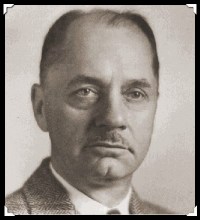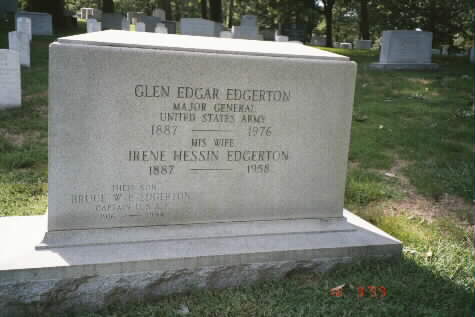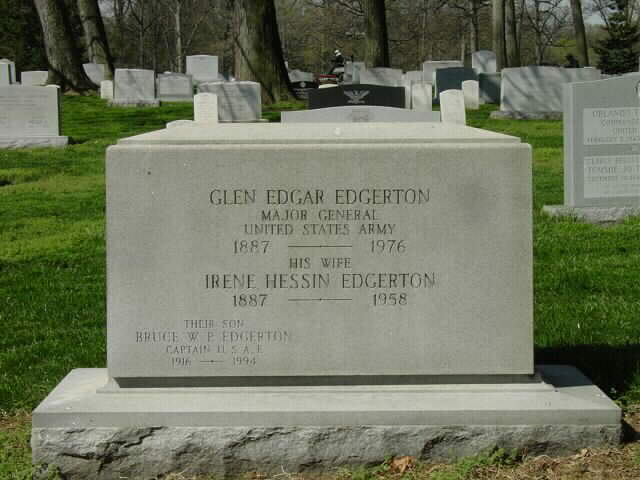Born in Parkerville, Kansas, on April 17, 1887, Glen E. Edgerton was the son of John Edgar and Alice Edgerton. He graduated from Kansas State College in 1904, from the Military Academy at West Point, in 1908, and from the U.S. Army Engineering school in 1910; he advanced through the grades to major general in 1942. In 1914 he married Cordelia I. Hessin.
Edgerton was Assistant Engineer of the Panama Canal from 1908 to 1909, then he was Chief Engineer of Alaska Road from 1910 to 1915; director of the War Department Sales from 1921 to 1923; chief of the Federal Power Communication from 1925 to 1929; assistant professor of the Engineering School of the U.S. Military Academy in 1930.
He returned to Panama as Panama Canal maintenance engineer from 1936 to 1940, then he was appointed Governor of the Panama Canal Zone on July 11, 1940, and served in that position until 1944.
During his tenure, several administrative changes occurred: the organization formerly known as the Bureau of Clubs and Playgrounds was designated the Panama Canal clubhouses; the special construction division and the special engineering division were consolidated under the title of the special engineer division.
During his administration, also, the highway and railroad bridge across the Canal at the existing Miraflores locks was officially opened to vehicular traffic in 1942, thus providing the first permanent bridge connection between the east and west banks of the Canal since the Canal was opened in 1914, and the excavation for the third locks project was initiated.
Edgerton retired on April 30, 1949. He died in 1976 and was buried with full military honors in Arlington National Cemetery.
Renovation of the White House:
During the next five years, the work on the building was overseen by the Commission on the Renovation of the Executive Mansion, created by Congress at Truman’s request on April 14, 1949, and the Public Buildings Service of the General Services Administration. An appropriation of $5.4 million had been requested for the work. The members of the commission were presidential appointees: Richard Dougherty and Douglas Orr, both from the committee Truman had appointed the year before; Senators Kenneth D. McKellar of Tennessee and Edward Martin of Pennsylvania; and Congressmen Louis C. Rabault of Michigan and Frank B. Keefe of Wisconsin. The president briefed the commission on June 3, and Congress approved the appropriation on June 23. Major General Glen E. Edgerton was appointed executive director. A retired army chief of staff, Edgerton had experience in a variety of complex engineering studies run by commissions, including those on
the Panama Canal and the Upper Mississippi 9-Foot Channel Project.
Michael Robert Patterson was born in Arlington and is the son of a former officer of the US Army. So it was no wonder that sooner or later his interests drew him to American history and especially to American military history. Many of his articles can be found on renowned portals like the New York Times, Washingtonpost or Wikipedia.
Reviewed by: Michael Howard



